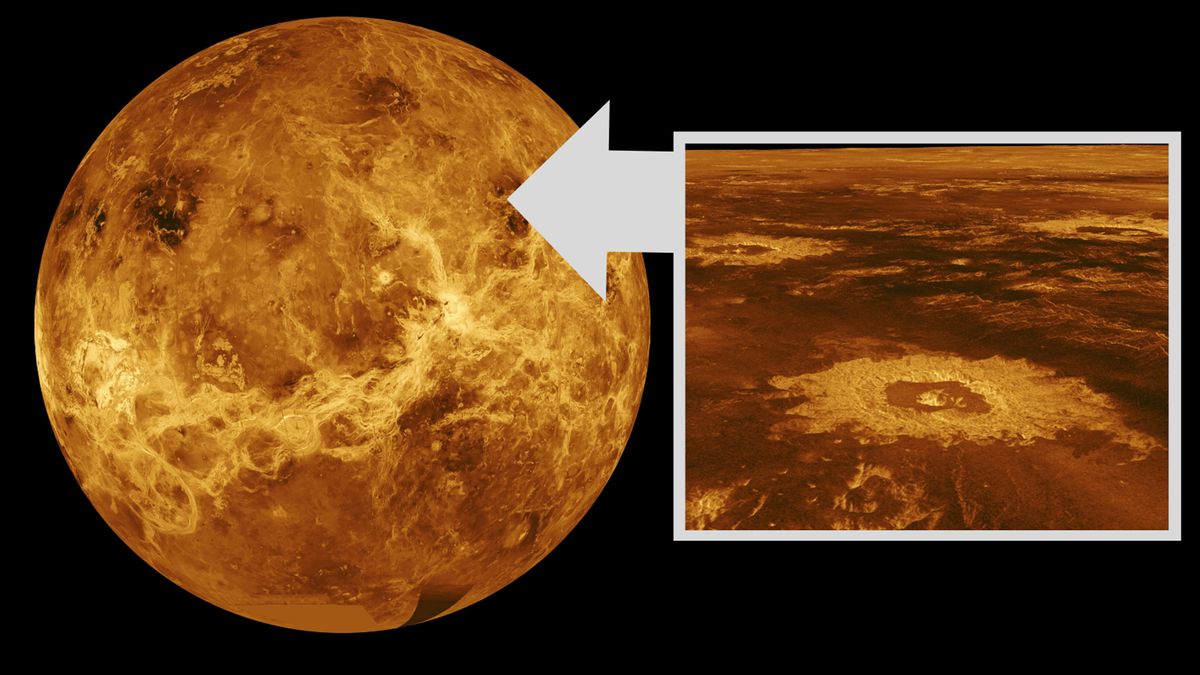Wispy ice clouds may form above Venus' hellish surface
The surface of Venus is a hellscape with temperatures hot enough to melt lead, but some regions of its atmosphere high over the surface remain cool enough to harbor ice and birth ghostly clouds

Ice "clouds" may form briefly in Venus' hellish atmosphere, satellite images and computer models suggest.
In a study published late last year in the journal Advancing Earth and Space Sciences, researchers found that both water and carbon dioxide could condense into ice particles high in the Venusian atmosphere. These ice particles, in turn, could help the scorching world hang on to its water.
Venus, the hottest planet in the solar system, is infamous for its hellish and inhospitable surface, where temperatures are around 867 degrees Fahrenheit (464 degrees Celsius) — hot enough to melt lead. But at an altitude of around 75 miles (120 kilometers) above the planet's volcano-strewn surface, temperatures can drop as low as minus 298 F (minus 183 C), according to the study.
Related: Life on Venus? Intriguing molecule phosphine spotted in planet's clouds again
The computer models suggested that at these temperatures, liquid water can condense into nanosize crystals of water ice, which then gather on smoke particles in the Venusian atmosphere in a process called nucleation. From these cloud seeds, fully formed clouds can develop. If the temperature drops below minus 298, carbon dioxide ice crystals then cover the water ice particles, making the clouds bigger.
"Since the atmosphere of Venus is mainly made of carbon dioxide, these carbon dioxide crystals grow and then sediment rapidly in the thin atmosphere," the authors wrote in the paper.
This process may make the upper mesosphere, or middle layer of Venus' atmosphere, "supersaturated" with both amorphous solid water and crystalline carbon dioxide ice, the study authors proposed. That means tiny water ice cloud seeds may continually encircle Venus, while short-lived carbon dioxide ice clouds would occasionally form.
Get the Space.com Newsletter
Breaking space news, the latest updates on rocket launches, skywatching events and more!
The so-called Venusian mesospheric clouds may act as a "cold trap," or a layer of the atmosphere that is substantially colder than the ones above and below it. They may also help to redistribute smoke particles through Venus' atmosphere, as well as help the planet hang on to its water content by preventing water particles from escaping into space.
In theory, the wispy carbon dioxide clouds over Venus could be visible if they were to get big enough to scatter detectable amounts of light.
"Venusian mesospheric clouds should be observable by contemporary satellite instruments, although their short lifetime means that the probability of detection is small," the team wrote. "If we were lucky enough to see one of these short-lived sporadic clouds, it would look a bit like mares' tail [cirrus] cloud[s] on Earth."
Join our Space Forums to keep talking space on the latest missions, night sky and more! And if you have a news tip, correction or comment, let us know at: community@space.com.

Robert Lea is a science journalist in the U.K. whose articles have been published in Physics World, New Scientist, Astronomy Magazine, All About Space, Newsweek and ZME Science. He also writes about science communication for Elsevier and the European Journal of Physics. Rob holds a bachelor of science degree in physics and astronomy from the U.K.’s Open University. Follow him on Twitter @sciencef1rst.










